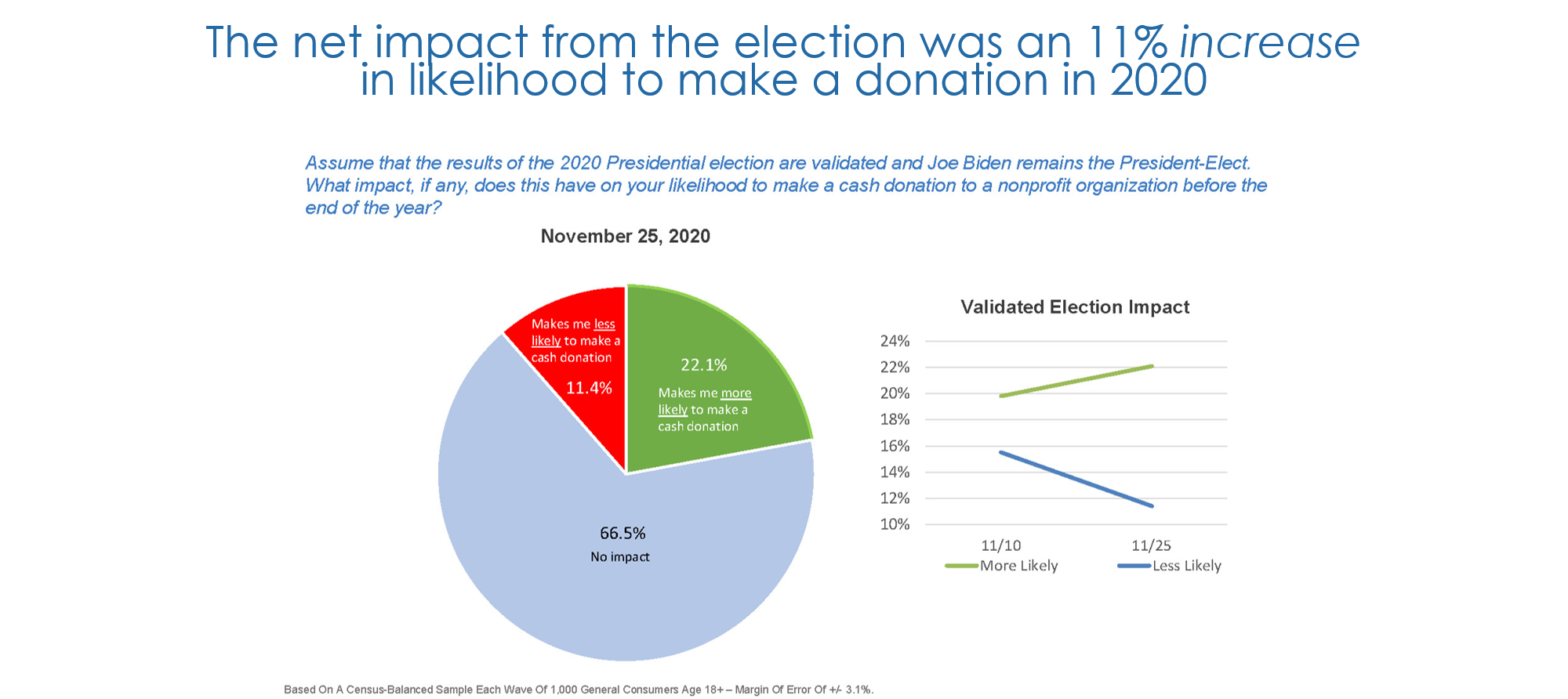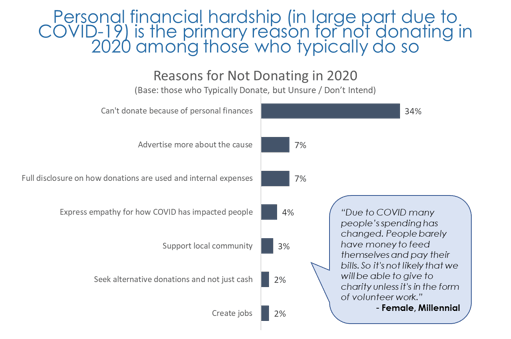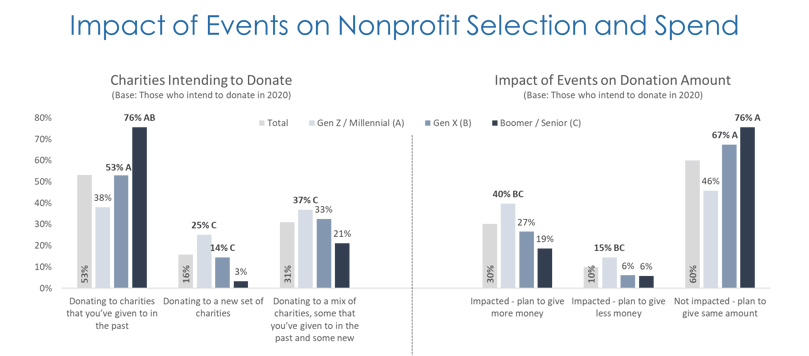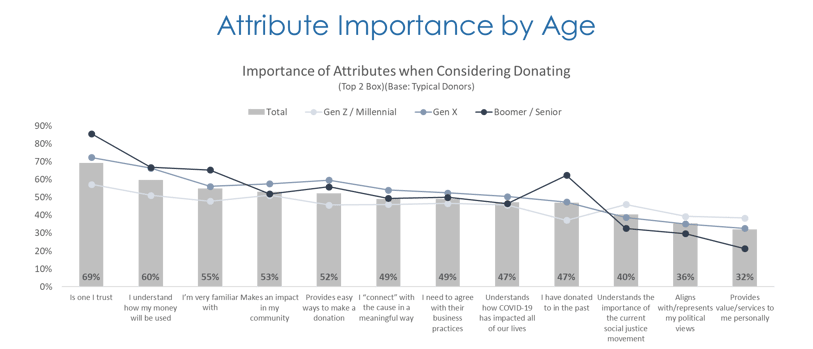Recently, I’ve found myself tapping to the drumbeat of a rap poem that each of my kids performed in 5th grade about shifting of the tectonic plates (hard to forget … I have four kids so I heard it a lot) because, on so many fronts, 2020 has felt like the Earth’s plates are moving under my feet.
With so much seemingly in flux, envisioning the impacts on charitable giving (specifically) and the nonprofit sector (in general) is daunting. But as Chief Strategy Officer at a social impact agency, that’s in the job description.
To better understand the impact of the “events of 2020” on charitable giving, THD fielded research just after the presidential election. The outcome presented both immediate-term observations, as well as interesting insights with longer-term implications. While some of the data reinforces broader trends that are known to us, other data suggests new opportunities for those nonprofits whose focus is on building sustainable revenue streams from long-term donors.

Figure 1. For 22% of consumers, a “validated” election of Joe Biden increased their likelihood to make a donation this year. Half as many (11%) reported being “less likely” to make a donation this year. Therefore, the net impact was 11%.
But with COVID-19 cases continuing to surge, and job growth and unemployment claims each going in the wrong direction, economic volatility is likely to remain the most influential factor on decision to donate at year-end and beyond.

The idea of democratizing fundraising and philanthropy is not new. It’s certainly the shared goal of the nonprofits we work with to bring awareness to causes that people believe in and to make them accessible for the everyday donor.
So, what are the potential longer-term impacts of 2020’s shifting plate tectonics? This is where it gets interesting to me.
While the direct relationship between discretionary income and charitable giving means Boomers and Seniors will continue to be the primary philanthropic targets, our recent survey suggests that 2020 has prompted shifts among Millennials and Gen Zers that are worth noting for the long haul.
Younger donors, particularly Gen Zers/Millennials, are significantly more likely to be donating to new organizations this year, either in addition to or in place of their “go-to” charities. They are also the most impacted by 2020 events, with 40% planning to give more money.

Figure 2. Younger donors, particularly Gen Zers/Millennials, are significantly more likely to be donating to new organizations this year, either in addition to or in place of their “go-to” nonprofits. They are also the most impacted by 2020 events and plan to change their donation amount accordingly.
This suggests an opportunity to get your nonprofit’s message in front of these younger cohorts who may have more to give and are open to considering new charities. This is particularly relevant when aligning with the social justice and political views for 46% of Gen Z/Millennial respondents.

Figure 3. Boomers/Seniors place a unique importance on an organization’s credibility — trust, familiarity, and past donation history — when deciding on a nonprofit for donation. Conversely, younger donors are more heavily influenced by political and social causes of the nonprofit.
To me, the shifts in importance of various attributes by age suggest we can't rely on what's always worked if we want to capture the next generation of givers. Millennial loyalty to brands is not automatic. They need to know more — education is key — before committing to a brand. Backed by another Phoenix research study, a high-level characteristic of younger consumers is that, since they have literally grown up with a keyboard in their hand and are quite adept at self-education, their expectations for whatever they want to "experience" are oftentimes established from online search.
If trust and familiarity increase in importance as we age (trust/familiarity/donated in past show greatest variance between age cohorts above), then building muscle memory with younger donors should be evaluated as an investment in a sustainable revenue stream. At THD, we’ll continue to monitor these trends alongside our clients, as we drive revenue today — and test and learn to build a base of loyal donors for tomorrow.
Of course, insight about the next generation of givers isn’t all we learned in the research we fielded after the election. Find out more about the impact of 2020 events on donor attitudes and expectations by downloading the full report: Impact of 2020 Events on Donor Attitudes and Expectations.
And here’s to firmer ground in 2021!





